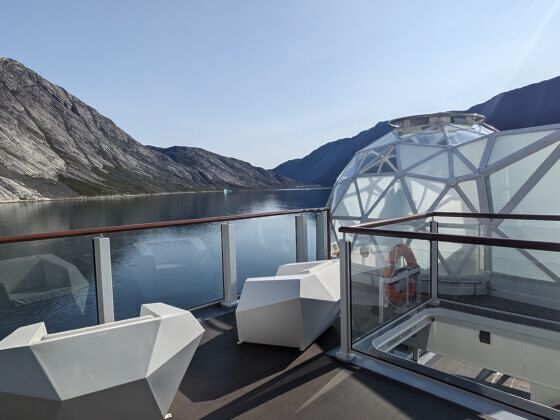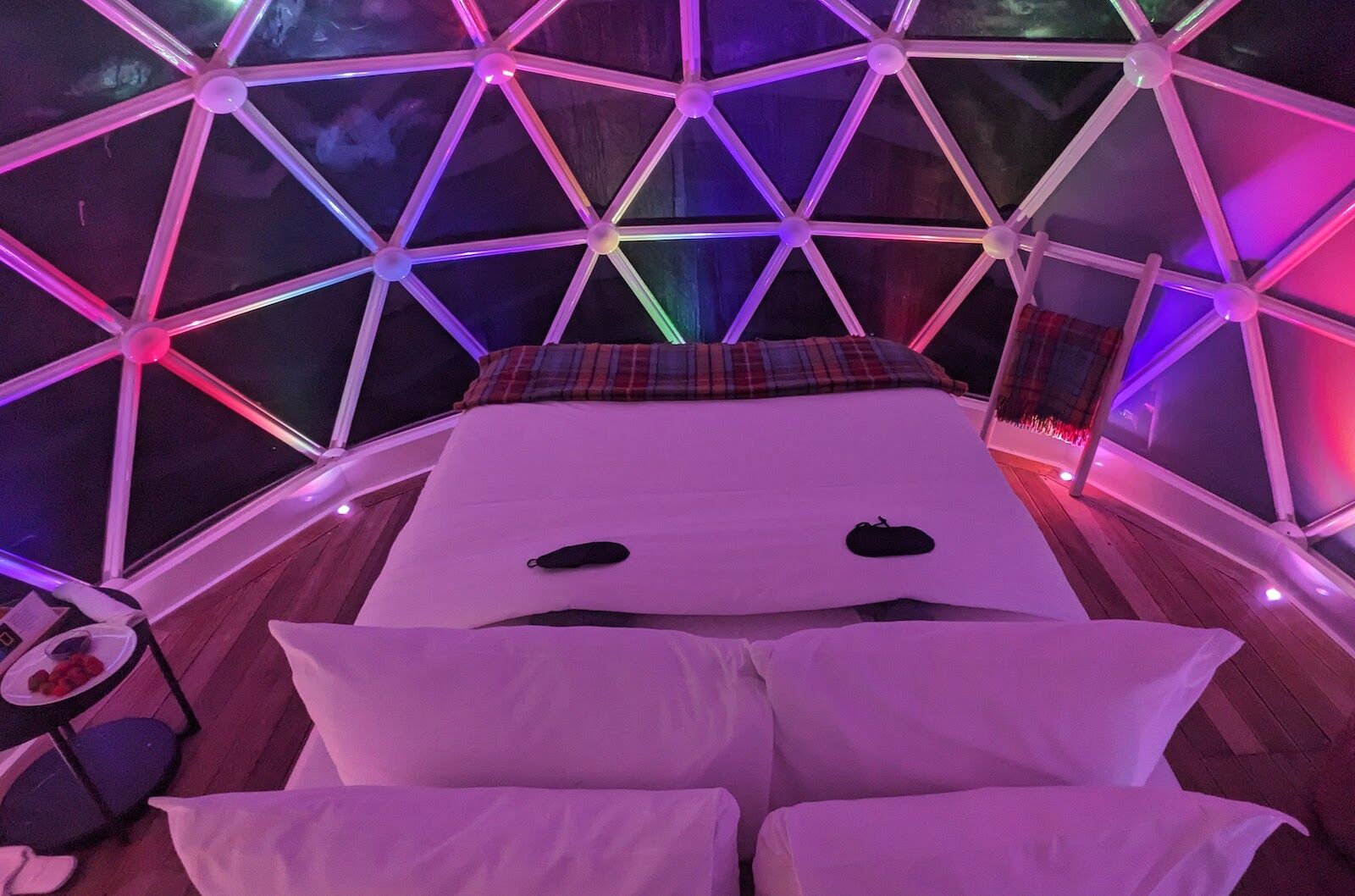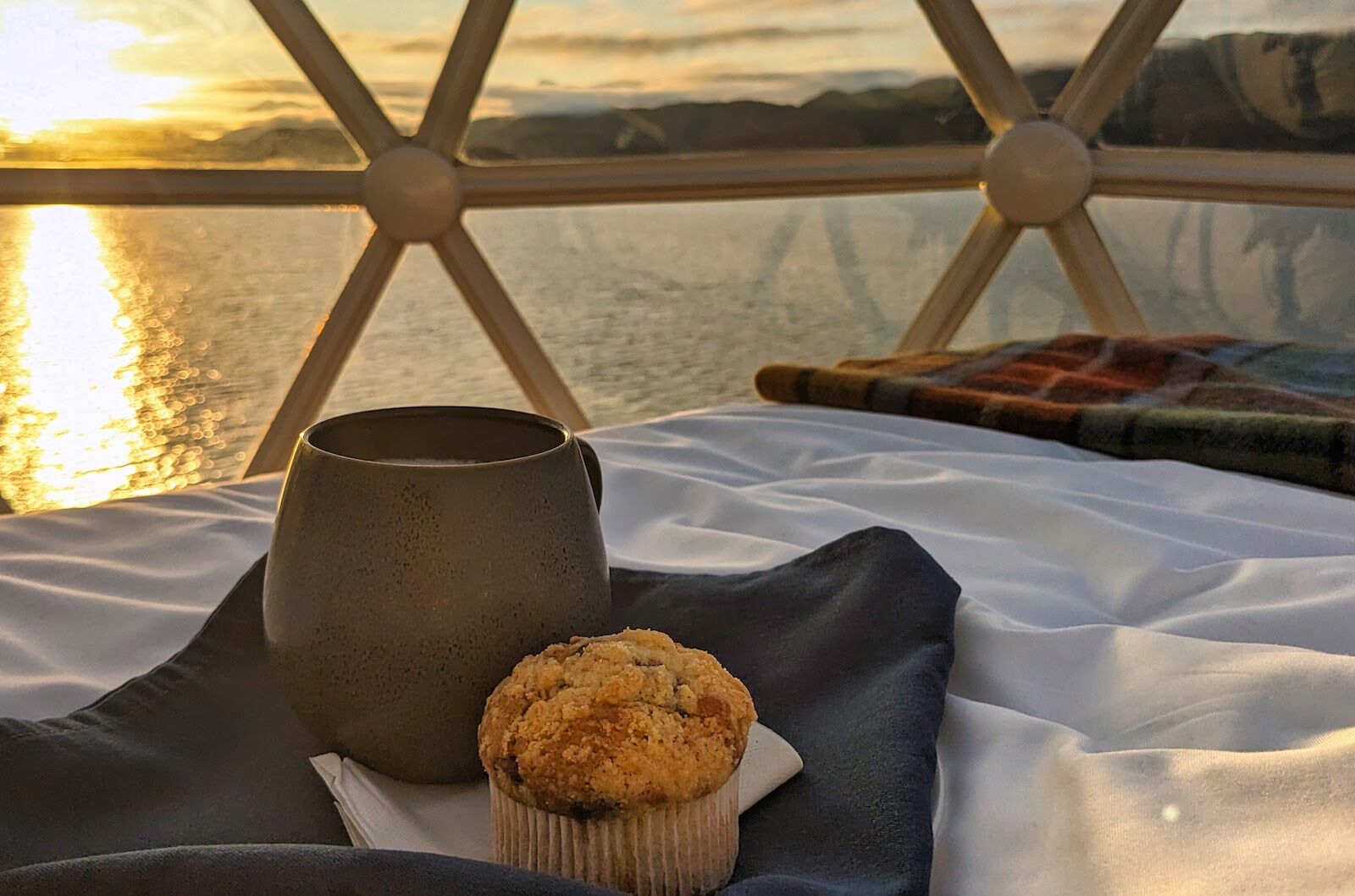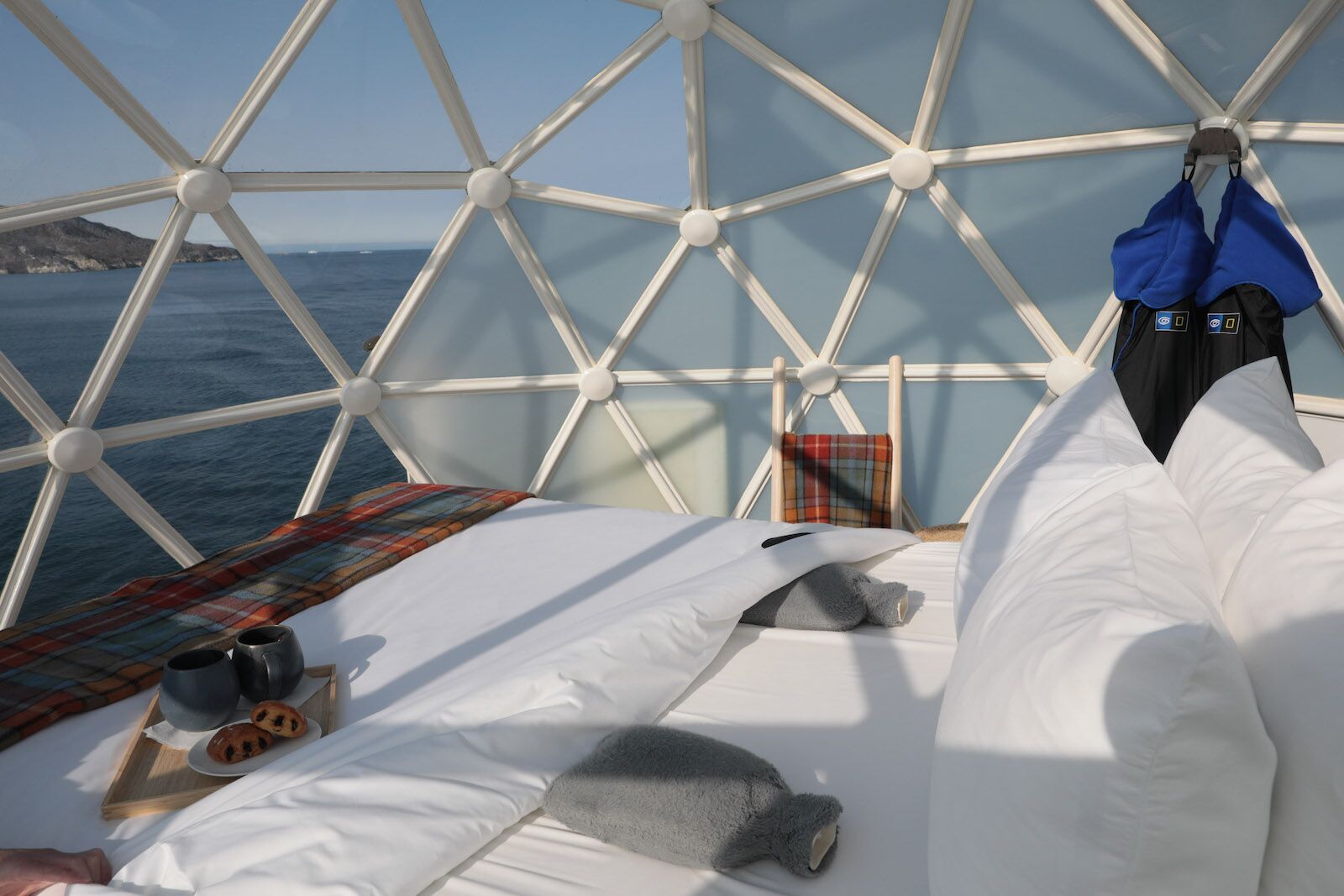We’re in the golden age of expedition cruises. Travelers can board relatively small luxury ships or yachts to explore remote places like the frigid Article Circle, or cruise to Antarctica to hike, kayak, and photograph penguin colonies. According to the Expedition Cruise Network, these types of excursions are the “fastest growing” market in the cruising world.


Spend a Night to Remember in a Glass Igloo on Your Next Expedition Cruise
As competition gets fiercer, and more expedition ships are heading to the same destinations, cruise lines are looking for ways to stand out. In some cases, they look to green-tech innovations to entice sustainably minded guests. Take Norway’s HX, formerly Hurtigruten Expeditions, which launched the world’s first battery-hybrid cruise ship, the MS Roald Amundsen. In other cases, the way to stand out might be an acoustical, multi-sensory underwater lounge below the waterline, such as the Blue Eye lounge on French cruise ship operator Ponant’s Le Lapérouse.
I leveled up my recent trip to Greenland aboard Lindblad Expeditions’ National Geographic Endurance with its igloo experience, which entailed glamping in one of two igloos on the ship’s deck. These aren’t actual igloos built from compacted snow cubes; they’re geodesic glass igloos built on the port (left) and starboard (right) corners of the observation deck located toward the stern (back) of the ship. They run to the edge of the deck and provide unparalleled panoramic views.
Lindblad’s ships, like the National Geographic Endurance and its sister ship, the National Geographic Resolution, take guests on trips packed with outdoor adventures. You can sail to Antarctica, South Georgia, and the South Atlantic’s Falkland Islands; circumnavigate Iceland; explore Norway’s Svalbard archipelago, the Norwegian coastline, and the Faroe Islands; voyage to coastal Japan; or go farther south in Patagonia. Wherever you are, an overnight stay in one of the igloos offers a unique view of each of these landscapes.
What it’s like to spend the night in a ship’s igloo

Photo: Brandon Withrow
I arrived just at sunset to find the igloo aglow in a mood-setting light show – a slow shift between soft purples, greens, and pinks that plays for guests when they arrive. That light show is intended to symbolize the aurora borealis, but it hardly compares to the view you get with a clear night sky, and in my case, the real northern lights that danced faintly in the distance.
There are no blinds on the igloo’s windows. On the entrance side, which faces the deck and an infinity-edged hot tub, the windows are private and frosted. On the other side, which sits at the edge of the ship deck and faces the water, the windows are clear. (Only the wildlife can see you there if you go au naturale.) Since the hot tub sits next to the igloo, it becomes a private space to soak and warm up after guests have retired to their rooms for the night.

Photo: Brandon Withrow
In the morning, I was greeted with a golden sunrise and the delivery of fresh coffee and a muffin from the ship’s hotel director, which you can schedule the night before. Eye masks are provided for those who don’t want to be awakened by the sunrise — though if you’re lucky enough to spend the night in an igloo at sea, there’s no better way to wake up than with the sun.
Being in polar regions, you might think that you’ll freeze in a room made of glass – one reason some guests cited when they tole me they decided not to stay in one of the igloos. I discovered that staying cozy isn’t an issue. Warming floors and two heated water bottles under the covers of the teak wood bed, fit for two, make for a very comfortable night’s stay. Though, like camping, the air in the room might feel a little crisp. This just depends on the itinerary you’ve chosen.
What to know about Lindblad’s igloo experience

Photo: Courtesy of Lindblad Expeditions
Since there are no outlets in the igloos, Lindblad suggests that you to charge your phone and cameras ahead of time. What the igloos do have is a supply of robes and oversized, fleece-lined capes if you decide to step outside or need to run to the restroom, which is located a few steps away inside the main ship. WiFi is available throughout the ship.
One of the best things about the experience is that a night in the igloo is free. Guests can request to stay in an igloo on a first-come, first-served basis – so get your request in right away once you board. Rooms are available after dinner on the night of your stay. Igloo availability is also dependent on the weather. If the ship is passing through a storm or there’s zero visibility, the room might not be available that night. The goal is to make that one-night stay a memorable one.
What it’s like to take an expedition cruise to Greenland

Photo: Brandon Withrow
Greenland’s landscape feels almost mythical, with rolling treeless mountains, glacial flows, and icebergs dotting the waters. It’s hard to imagine a better way to see that magic than from an igloo. It’s not that Lindblad’s staterooms don’t come close – they do. My cabin had a semi-private balcony with chairs and table. You can also hang a hammock out on your balcony, stretch out under a blanket, and watch icebergs float by or hope to glimpse a breaching whale. Not all rooms have balconies, so be sure to choose a room on the right deck. Balcony cabins also include a sofa, coffee table, a desk with a chair, bedside tables, and closets with plenty of space.
There are many reasons to take an expedition cruise over a standard ocean cruise, especially when you’re headed to a destination like Greenland. Unlike mainstream ocean cruises with enough guests to populate small towns, expedition ships are usually small with only a couple hundred guests. They’re nimble adventures, eager to take you to remote landscapes that are only accessible by small ships that can manage tight fjords. They’ll take you hiking over post-glacial landscapes, kayaking near turquoise icebergs, and to small villages inaccessible to large ships.
They might even put you up in an igloo overnight to see all of that magic front and center. An experience like that will almost certainly make you question your senses – but not your life choices.